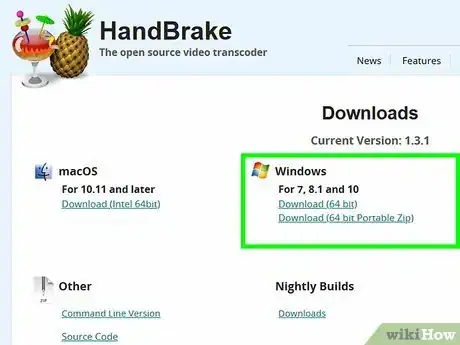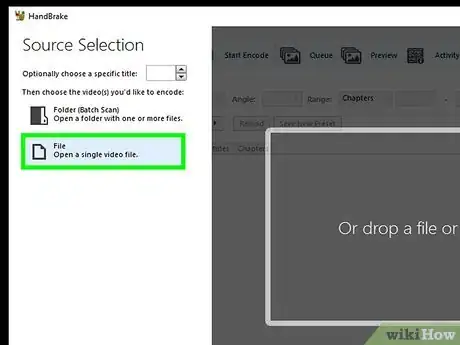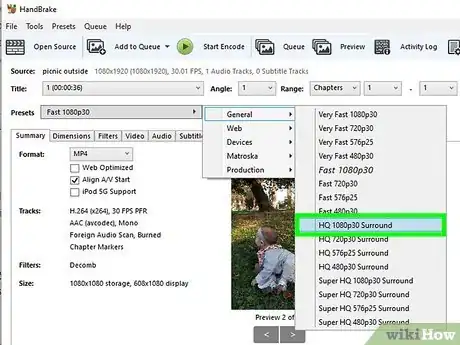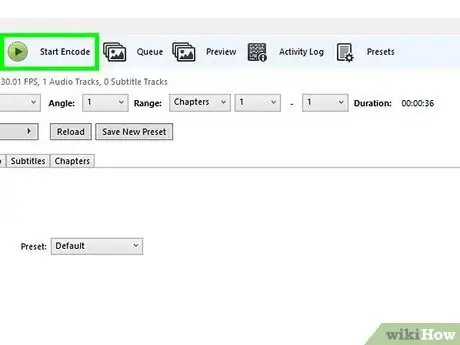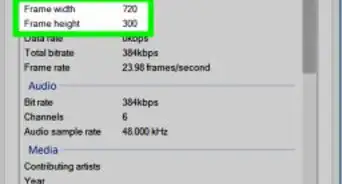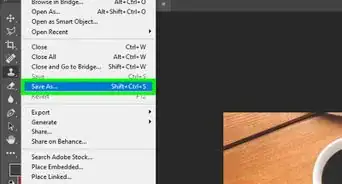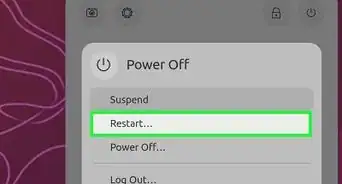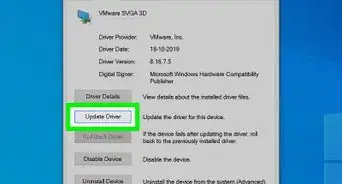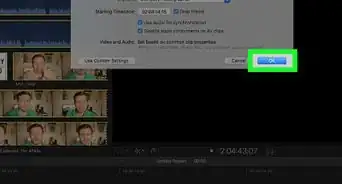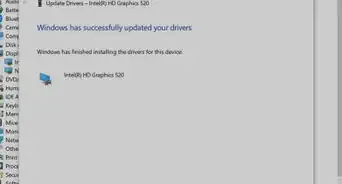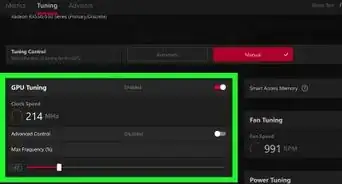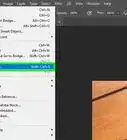This article was co-authored by wikiHow staff writer, Nicole Levine, MFA. Nicole Levine is a Technology Writer and Editor for wikiHow. She has more than 20 years of experience creating technical documentation and leading support teams at major web hosting and software companies. Nicole also holds an MFA in Creative Writing from Portland State University and teaches composition, fiction-writing, and zine-making at various institutions.
There are 7 references cited in this article, which can be found at the bottom of the page.
This article has been viewed 721,337 times.
Learn more...
This wikiHow teaches you how to improve the quality of your video files by converting them to a High Definition (HD) format. You'll also learn how to adjust the settings on your iPhone, iPad, or Android camera to record great looking videos in the highest resolution possible.
Steps
Using Handbrake for Windows or macOS
-
1Open HandBrake on your computer. HandBrake is a free video editor that makes it easy to improve the quality of a low-resolution video clip. If you haven't yet installed HandBrake, here's how you can get it:
- Go to https://handbrake.fr/downloads.php in a web browser.
- Click the Download link for your operating system.
- Double-click the downloaded file.
- If you're using a Mac, drag the HandBrake icon to the Applications folder. On Windows, follow the on-screen instructions to complete the HandBrake installation.
-
2Click Open Source. It's in the top-left area of the app.Advertisement
-
3Import your video file. You can either drag the video file onto the "Or drop a file or folder here" box or click File and select the file.[1]
-
4Select a high-quality preset from the "Presets" menu. This menu appears near the top of the app, as well as in the menu bar if you're using a Mac. Presets are groups of settings that can adjust the quality of your video to appear best on certain types of screens.
- For example, if you want to increase your video to 1080p Full High Definition, choose one of the HQ 1080p30 presets.
- The higher the quality, the larger the video file. Avoid picking a super-high resolution if you don't actually need it.[2]
- To fine-tune the quality, click the Video tab and move the "Constant Quality" slider right (to increase quality) or left (to decrease).
-
5Click Preview. It's near the top of the window. This displays a short preview of your quality adjustments.
-
6Click the Filters tab for more editing options. In addition to increasing the resolution, you can also use tools like Sharpen and Deinterlace to improve imperfections in the original video. After making your changes, click Preview again to see how they look.
-
7Choose a saving location. The "Save As" bar at the bottom of the app contains the default saving location. You can leave this as-is, or click Browse to choose another folder. Either way, make sure you remember this location so you can find your encoded video later.
-
8Click Start Encode. It's in the toolbar at the top of the app. This converts the video to its new high-quality format. The finished file will be saved to the folder you selected or noted in the previous step.[3]
Using an iPhone or iPad
-
1Record in HD or 4K. Before recording a new video with your iPhone or iPad, adjust the video quality to a higher-quality in your camera settings. This is the best way to ensure you're getting a great quality video from the start. Here's how:[4]
- Open your Settings.
- Scroll down and tap Camera.
- Tap Record Video.
- Select a higher resolution. For example, if you want to record Full HD video, select a 4K option.
-
2Open iMovie to adjust the resolution of a video clip. If you already have a video clip that was recorded in a lower resolution than what you'd like, you can adjust the resolution in iMovie. It's the purple icon with a white star, and you'll usually find it on the home screen.
- If you don't have iMovie, download it for free from the App Store.
-
3Tap + to create a new project.
-
4Tap Movie. It's the first option. A list of video files on your phone or tablet will appear.
-
5Select a video and tap Create Movie. It's at the bottom of the screen. This opens the video for editing.
-
6Tap Done. It's at the top-left corner.
-
7Tap Share . It's the square with an upward-pointing arrow at the bottom-center part of the screen.[5]
-
8Tap Save Video. It's at the bottom of the menu. Some resolution sizes will appear.
-
9Select the desired resolution. This saves the video with its improved resolution to the Photos app.
Using an Android
-
1Record in HD or 4K. Before recording video, you'll want to check your camera's settings to make sure you're recording in the best possible format. The steps to do this vary by Android (and not all Androids support the same resolutions), but you can usually find your camera settings with these steps:[6]
- Open the Camera app on the home screen or in the app drawer.
- Tap Settings or a gear icon. If you don't see either, tap any icon that looks like a menu and select Settings.
- Select your front or rear camera.
- Select a higher resolution. For example, if you want to record Full HD video, select a 4K option.
-
2Install a video converter app that converts video files to HD. Although many video converter apps are available at no cost from the Play Store, most charge extra to convert to high-quality formats like 1080p (Full HD). Video Format Factory by Keerby is a highly-rated free app that can convert video, but you'll need to pay $4.49 to upgrade if you want to convert to HD or Full HD.
-
3Open your video in a video converter app. For example, if you downloaded Video Format Factory, open the app, tap tap + Add at the top-left corner, and then select the video you want to convert.
-
4Select your desired resolution. No matter which app you're using, you'll have to choose the desired output size for your conversion. For example, to increase the quality to 1080p, you'll usually choose 1080p or 1920 x 1080.
- If the app you are using requires payment for high-quality conversions, follow the on-screen instructions to process your payment.
- The higher the resolution, the larger the file size.
-
5Select the option to convert the file. This might be a checkmark or the word Convert. Once the file is converted, its resolution will be updated.
Improving Quality in Any Video Editor
-
1Apply a sharp filter to your video. A sharp filter is typically found in the filters and effects menu. A sharp filter makes the video image appear crisper by identifying the edges in a video image and shrinking them. If your video includes an option to adjust sharpness, increase it for better quality.
-
2Apply a blur, soften, or smooth filter. These effects can be found in the filters and effects menu of any video editing application and can be effective in removing unwanted artifacts such as graininess or scratches in analog video files. Experiment with these filters to determine which of them produces the best results. You will likely only need to apply a small amount.
-
3Use color correction filters to adjust the color. Color correction filters, such as brightness, contrast, levels, hue, saturation filter to improve the light, shadows and color balance of a video file. Most video editing applications will contain these or similar features located in the effects and filters menu. Experiment by applying each separately to determine which combination of filters produces the best results.
-
4Use noise reduction, or video denoising, to improve video quality. Video de-noising is a process by which analog 'noise', such as lines, dots, color degradation and various other unwanted artifacts can be removed or diminished. The video denoising filter typically will be found in the effects and filters menu of the video editing application.
-
5Use a video stabilizer effect to stabilize shaky video. This function focuses on reducing a shaky video recorded in motion. It compensates global motion by moving whole frame to correct for the motion in the video.
- If your video editing software does not have a video stabilization tool, you can stabilize videos for free online at https://video-stabilize.com/
-
6Use de-interlacing options. Video interlacing is a process in which every other line of an image is scanned and alternated each frame. Progressive scans that display each line each frame produce better quality images. Different de-interlace options work better for different video formats. The de-interlace options may be in the filters and effects menu, or it may be an option you select when you render or export a video.
-
7Use a post-processing filter to automatically adjust the interpolation. Most video editing apps contain a post-processing tool typically found in or near the filters and effects menu. Locate and select the post-processing tool to improve video quality.
-
8Render the video in MP4 format using the H.264 codec. When you are happy with the way your video looks, you can render it. The option to render or export a video is typically found under the File menu. When you render or export a video, you will be asked to choose a file format. The most common file format is MP4 using the H.264 codec.
Community Q&A
-
QuestionHow can I improve my video download time?
 Community AnswerThis is dependent on your download and upload speed. The only way to improve that is getting a faster internet plan.
Community AnswerThis is dependent on your download and upload speed. The only way to improve that is getting a faster internet plan. -
QuestionWhat video editor did you use in these examples?
 Community AnswerI used Shotcut, which is a free and open-source cross-platform video editing application for FreeBSD, Linux, OS X and Windows.
Community AnswerI used Shotcut, which is a free and open-source cross-platform video editing application for FreeBSD, Linux, OS X and Windows. -
QuestionI want to clarify a specific portion of a video online, how can I do this?
 Community AnswerDepends on the video editing program. Normally, the video editors have a highlight/section selector tool to do so.
Community AnswerDepends on the video editing program. Normally, the video editors have a highlight/section selector tool to do so.
References
- ↑ https://handbrake.fr/docs/en/latest/workflow/open-video-source.html
- ↑ https://handbrake.fr/docs/en/latest/workflow/adjust-quality.html
- ↑ https://handbrake.fr/docs/en/latest/workflow/start-encoding.html
- ↑ https://support.apple.com/en-us/HT209431
- ↑ https://www.softwarert.com/edit-video-resolution-imovie-iphone
- ↑ https://www.samsung.com/us/support/troubleshooting/TSG01001538/
- ↑ https://techwiser.com/video-converter-apps-for-android/
About This Article
1. Download video editing software.
2. Apply a filter to sharpen the image.
3. Apply a slight amount of blur if needed.
4. Use color correction filters to enhance the color, contrast, or brightness of a video image.
5. Use a video stabilizer effect to correct shaky video.
6. Use a de-interlace filter to correct interlaced video.
7. Render the video in MP4 format with a H.264 codec.
